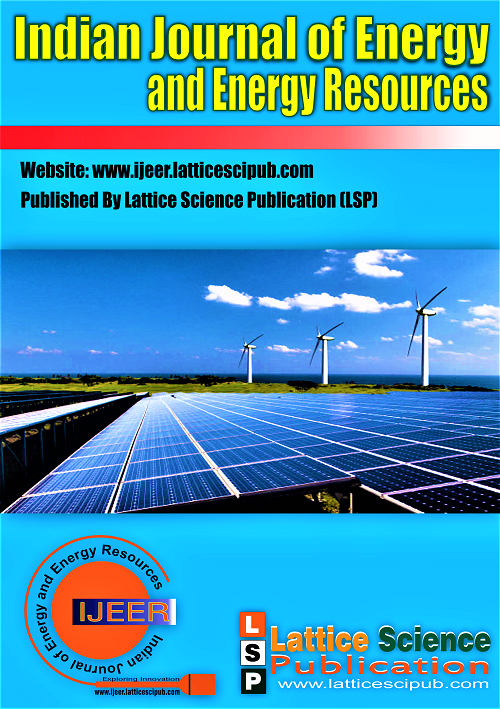Scope of Solar Energy and Wind Energy in District Raebareli (Uttar Pradesh)
Main Article Content
Abstract
Renewable energy resources are the Potentials for today and for the forthcoming future of our Generations thus making the relieve from dependability of generations on the fossil fuels and making the right use of resources of what nature has given to us . Talking about the todays existing renewable energies are in the form of Solar, Wind, Tidal, Hydrothermal, Geothermal etc are various kind of sources of energies in the Renewable forms. Talking about the scope of innovations in this area it has shown a great potentials as we can know about the Technology of Decarbonisation in which carbon is been seeing as source of energy Potentials for the future. Talking about the todays worlds consumption , it is about Coal(27%) , Natural gas (24%) , Hydro energy (7%). Talking about Raebareli district in Uttar Pradesh the average Specific Photovoltaic Power Output is found to be 1495.6 kWh/kWp , Direct Normal Irradiation found to be 1190.9 kWh/m2 and Global Horizontal irradiation is found 1771.5kWh /m2.So according to these datas it can be conferred that a great scope of solar energy can be utilised in my area and also the Government has some programmes also for installing the solar Panels in thus area.
Downloads
Article Details

This work is licensed under a Creative Commons Attribution-NonCommercial-NoDerivatives 4.0 International License.
How to Cite
References
https://power.larc.nasa.gov/data-access-viewer/
https://www.shaktipumps.com/solar-calculator.php
https://photovoltaic-software.com/pv-softwares-calculators/online-fr
ee-photovoltaic-software/pvgis
UO SRML: Solar position calculator
https://www.loomsolar.com/blogs/subsidy/solar-panel-subsidy-in-utt
ar-pradesh
Shruti Sharma, Kamlesh Kumar Jain, Ashutosh Sharma a review on
“Solar Cells: In Research and Applications”,Materials Sciences and
Applications, 2015, 6, 1145-1155 Published December 2015
http://dx.doi.org/10.4236/msa.2015.612113 [CrossRef]
Askari Mohammad Bagher, Mirzaei Mahmoud Abadi Vahid,
Mirhabibi Mohsen. “Types of Solar Cells and Application”.
American Journal of Optics and Photonics.Vol. 3, No. 5, 2015, pp.
-113. doi: 10.11648/j.ajop.20150305.17 Book of “Wind and Solar
Power Plants” by Mukund Patel, CRC Press [CrossRef]
N. Gupta, G. F. Alapatt, R. Podila, R. Singh, K.F. Poole, (2009).
"Prospects of Nanostructure-Based Solar Cells for Manufacturing
Future Generations of [CrossRef]
Photovoltaic Modules". International Journal of Photo energy 2009:
doi:10.1155/2009/154059. [CrossRef]
Book of “Solar Energy” by Dr. S. P. Sukhatme. Tata McGraw Hill
Publication.
Gaurav A. Madhugiri, S. R. Karale, “High solar energy concentration
with a Fresnel lens: A Review”Vol.2, Issue.3, May-June 2012
pp-1381-1385 ISSN: 2249-6645
S. Chakrabarti, S. Chakrabarti Rural electrification programme with
solar energy in remote region - acase study in an island Energy
Policy, 30 (2002), pp. 33-42 [CrossRef]
A. Pueyo, F. Gonzalez, C. Dent, S. DeMartinoThe Evidence of
Benefits for Poor People of Increased Renewable Electricity Capacity:
Literature Review IDS (2013) IDS Evidence Report No 31
United Nations Sustainable Development Goals (2015) Available:
https://sustainabledevelopment.un.org/sdgs, Accessed 26th Jan 2017
Google Scholar
GoI India's intended nationally determined contribution:working
towards climate justice Available:
http://www4.unfccc.int/submissions/INDC/Published%20Document





